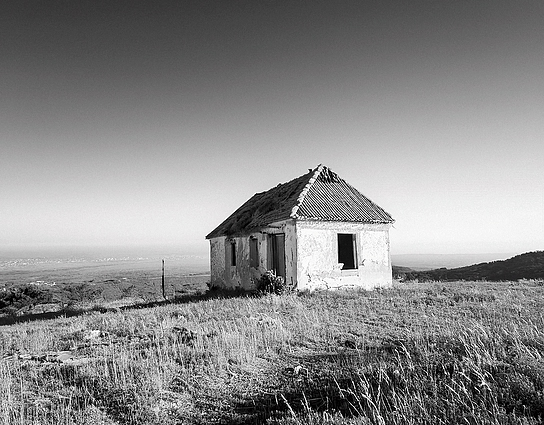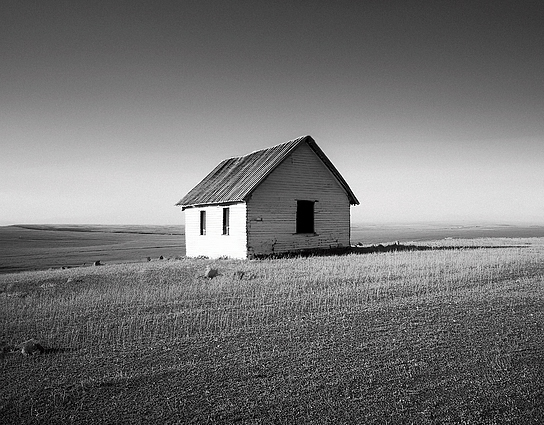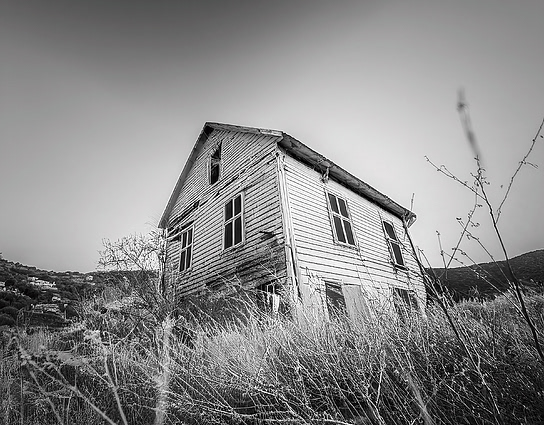Bob Orsillo's black and white photograph titled "Through The Dust On My Window" captures a poignant and evocative scene. The image is framed by a window, which serves as the central focus. The window is set within a thick, slightly worn wall, with visible signs of age and decay, such as peeling paint and rough textures. The sill of the window is dusty, adding to the sense of neglect and abandonment.
Through the window, the viewer is presented with a stark, wintry landscape. The ground outside is covered in a blanket of snow, creating a smooth, uninterrupted white surface. In the center of the view stands a solitary tree, its bare branches reaching out in all directions. The tree is devoid of leaves, emphasizing the cold and desolate atmosphere of the scene. The background is blurred, suggesting a distant horizon and adding depth to the composition.
The contrast between the dark, shadowy interior and the bright, snowy exterior creates a striking visual effect. The window acts as a portal, drawing the viewer's eye from the dim, enclosed space to the open, expansive outdoors. This juxtaposition highlights themes of isolation, longing, and the passage of time.
The photograph captures a moment of stillness and reflection. The viewer is invited to contemplate the scene beyond the window, perhaps imagining the stories and memories associated with the place. The use of black and white enhances the timeless quality of the image, allowing the textures and contrasts to take center stage.
Orsillo's choice of black and white photography enhances the timeless quality of the image, making it feel like a moment frozen in time. The absence of color allows the viewer to focus on the essential elements of the scene, such as the textures of the weathered wood, the patterns of the dry grass, and the play of light and shadow. The photograph is a poignant reminder of the impermanence of human endeavors and the enduring beauty of nature's reclamation of abandoned spaces.
In summary, "Through The Dust On My Window" is a masterful composition that captures the essence of isolation and abandonment. The image's stark contrasts, detailed textures, and evocative mood make it a powerful and thought-provoking piece of art. It serves as a testament to Bob Orsillo's skill in capturing the beauty and melancholy of desolate places, inviting viewers to pause and reflect on the passage of time and the stories hidden within abandoned structures.







